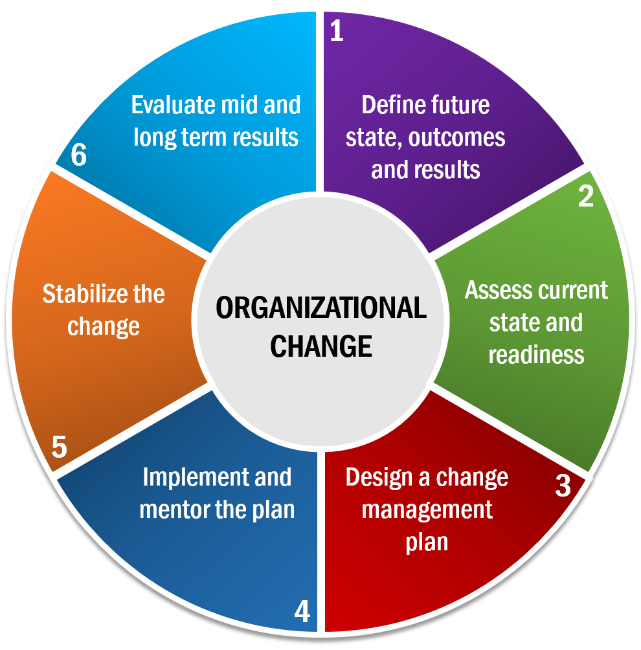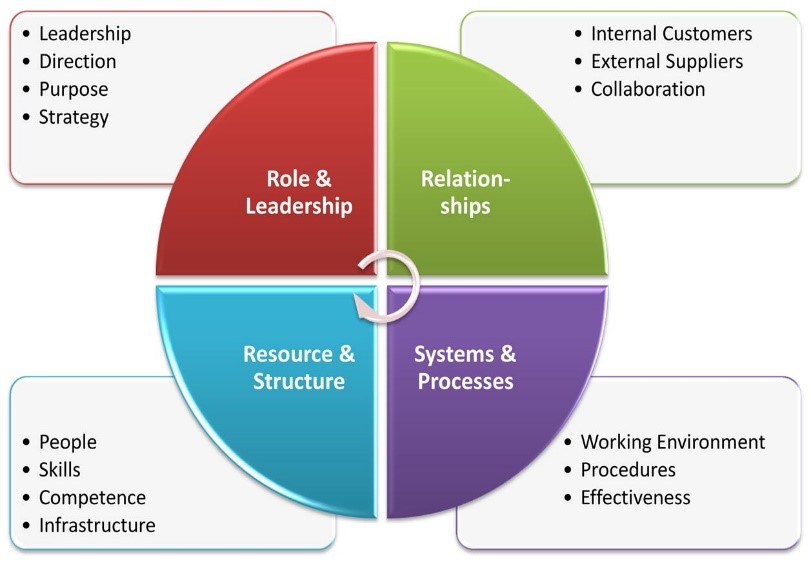Change Management
"If You Fail to Plan, You Are Planning to Fail" - Benjamin Franklin

Organisations are not static and continuously undergo change. Organizational change is necessary for companies to succeed and grow.
Many factors make organizational change necessary. Some of the most common faced by managers include:
- New leadership at the helm of the company or within its departments
- Shifts in the organizational team structure
- The implementation of new technology
- The adoption of new business models
Organizational change refers to the actions in which a company or business alters a major component of its organization, such as its culture, the underlying technologies or infrastructure it uses to operate, or its internal processes. It is considered to be the method of leveraging change to bring about a successful resolution.
Organizational change is a broad term. Some change is sweeping: A substantial evolution in the direction of a company. Other shifts are less dramatic, focusing instead on a small aspect of an organisation.It can be helpful to think of change as a spectrum. On one end, you’ll find adaptive change, which speaks to those modest iterations. On the other, there’s transformational change, in which vast change is pursued.
Adaptive changes are small, incremental changes organizations adopt to address needs that evolve over time. Typically, these changes are minor modifications and adjustments that managers fine-tune and implement to execute upon business strategies. Throughout the process, leadership may add, subtract, or refine processes.
Transformational changes have a larger scale and scope than adaptive changes. They can often involve a simultaneous shift in mission and strategy, company or team structure, people and organizational performance, or business processes. Because of their scale, these changes often take a substantial amount of time and energy to enact. Though it’s not always the case, transformational changes are often pursued in response to external forces, such as the emergence of a disruptive new competitor or issues impacting a company’s supply chain.
Many changes will fall somewhere between adaptive and transformational on the spectrum. For this reason, managers need to understand that the change process must be tailored to the unique challenges and demands of each situation.
Change management drives the successful adoption and usage of change within the business. It allows employees to understand and commit to the shift and work effectively during it.
Without effective organizational change management, company transitions can be rocky and expensive in terms of both time and resources. They can also result in lower employee morale and competent skill development. Ultimately, a lack of effective change management can lead the organization to fail.
Organizational Change Management provides:
- Standard processes and tools for managing change
- A framework for leadership competency at all levels of the organization, from front-line supervisors to senior executives
- A strategic capability that enables the organization to be flexible, change-ready, and responsive to marketplace changes
We support our clients to understand and engage with the organisational change management process. The key models we use are the Organisational change cycle and the Wheel of change:
Organisational change cycle:

Wheel of change:



